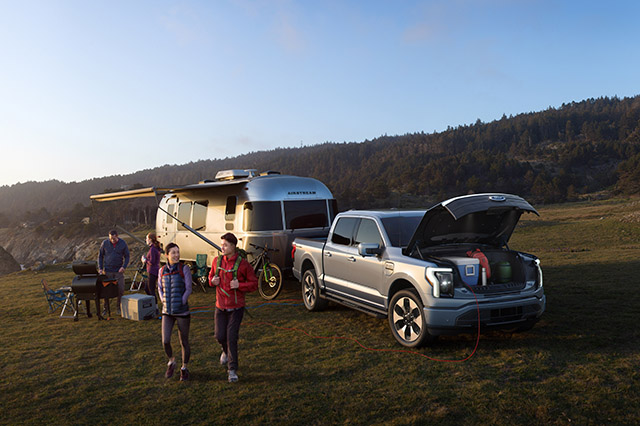From the art deco automobiles of the Roaring ’20s to the efficiency-minded vehicles born from the ’73 oil crisis, cars have always embodied the world in which they were made.
Even as we navigate through unprecedented times, automobiles have kept pace, becoming greener, more connected and easier to purchase.
So what does the road ahead have in store for automobiles?
Car-Buying Trends
If you’ve been in the market for a new car, you’re likely well aware of the skyrocketing prices. The average price of a new car surpassed $42,000 this summer, an all-time high, according to Kelley Blue Book.
The price hike is largely the result of a dwindling supply caused by a global microchip shortage. Inventory at the start of August was roughly 1.2 million, 68% below what it was at the same time in 2019, according to a Cox Automotive analysis.
“New-vehicle inventory continues to slowly drop, which is impacting current new and wholesale vehicle prices and sales incentives,” said Kayla Reynolds, a Cox Automotive industry analyst. “We expect the auto market for both new and used vehicles will continue to feel the impact of the new vehicle inventory shortage – in the form of elevated prices and limited choice – well into 2022 and possibly into 2023 as well.”
With prices soaring, car companies are trying to make the buying process easier by shifting much of it to the digital realm. In fact, purchasing a vehicle online has never been more popular.
For years, car buyers have been doing research on the internet, but the actual transaction has almost always taken place at the dealership. That is changing at a rapid pace. In 2018, only 1% of U.S. consumers purchased their vehicles online, according to Google. By March of 2020, that number jumped to 10%.
Automakers are responding. Nissan, for example, recently unveiled its “Nissan@Home” program that allows customers to schedule a test drive, manage the purchase process, take delivery and handle service needs all from
the comfort of their home.
The future of car buying will likely consist of a blended retail model with brick-and-mortar dealerships complementing a growing number of online services.
Electric Vehicles
The promise of electric vehicles has remained on the horizon for so long that it’s easy to believe these green vehicles will just remain a niche category. But while EVs still represent a small percentage of the market – just 2% of the new cars purchased in the U.S. in 2020 – the tide may begin to shift in 2022.
EV ownership was already on the rise in 2021, but what makes today’s forecast so promising is the unprecedented commitment and support from automakers. Hardly a month went by this year without another major automaker announcing plans to transition to a predominantly emission-free lineup of cars. In August, President Joe Biden announced a goal for electric vehicles to make up half of all new U.S. vehicle sales by 2030, and his $1 trillion infrastructure bill allocates $7.5 billion to improving EV infrastructure.
With improvements in technology and efficacy, the gap in price between EVs and similar gas-powered cars is rapidly closing. The average transaction price for all new vehicles in June was $42,282, according to Kelley Blue Book, compared to $49,766 for all electric vehicles.
Another concern – the lack of public charging stations – shows signs of abating. The infrastructure bill should help kick-start a build-out from the public sector, and a rise in ownership may incentivize private companies to invest in charging stations.
Technology
In January, a record 175 transportation and vehicle technology companies will present at the 2022 CES, the world’s most influential technology event. It’s more proof the automobile as we know it is undergoing a technological transformation.
Here are some of the technology features that could be in your next car.
Health and Wellness Features
Massage Functionalities: Massaging seats have typically only been available in higher-end cars. Expect to see them more widely available, as they have proven to be more than just a luxury feature.
Biosensors: Biosensors can notice changes like spikes in heart rate or respiration. Vehicles could then take this information and respond by playing calming music or turning on the air conditioning.
Air Purifiers: To combat air pollution, automakers are incorporating advanced purifiers into their vehicles. Volvo, for example, introduced its Advanced Air Cleaner technology into its 2021 models. It claims to remove 95% of harmful airborne matter.
Increased Connectivity
Cars have quickly become an extension of our connected life. Future vehicles will be able to connect not just with our other devices, but with other cars, networks and even infrastructure.
The technology could communicate with stop signs to see which vehicle has the right of way; navigate away from congested areas; and receive software updates and diagnostic data.
The most notable connected technology, however, is vehicle-to-vehicle communication, which allows cars to wirelessly exchange information like speed, location and direction. This feature could help reduce traffic jams and prevent crashes.

The New Cars of 2022
Everyone loves a shiny new object, and 2022 brings with it a group of highly impressive ones. Here are some of the new vehicles to keep an eye on.
Ford F-150 Lightning
While green technology has long been relegated to smaller, commuter sedans, it now finds a home in the most utilitarian vehicle: the pickup truck. But not just any pickup truck. The Ford F-150 has been the best-selling vehicle in the U.S. for more than four decades. The all-electric Lightning model’s arrival could mark a transformative shift in the EV market.
Lucid Air
In 2022, EV startup Lucid Motors is slated to release its first car, the Lucid Air. The luxury sedan is most notable for its Environmental Protection Agency-estimated range of 517 miles. Even though several EV models have 200-plus mile ranges, research shows one of the most common concerns with EVs is range anxiety, or the fear the car will run out of power before reaching its destination. The Lucid Air, and the technology behind it, should help make range anxiety a thing of the past.
Grand Wagoneer
What’s in a name? Jeep is certainly trying to find out. The marque is resurrecting the moniker after nearly 30 years for the brand-new Grand Wagoneer. The SUV is being positioned as a more luxurious option than the other new model, the Wagoneer. The Grand Wagoneer is the epitome of the modern SUV, combining luxury and power. Equipped with every imaginable tech and creature comfort feature, it also boasts a towing capacity of 10,000 pounds and a V-8 engine delivering 471 horsepower.
Check out more auto-related stories at AAA.com/CarsTrucks.
Visit AAA’s Electric Vehicle platform for more information on these cars of the future.
One Thought on “Fast Forward”
Leave A Comment
Comments are subject to moderation and may or may not be published at the editor’s discretion. Only comments that are relevant to the article and add value to the Your AAA community will be considered. Comments may be edited for clarity and length.














Very timely and informative article. Thank you.